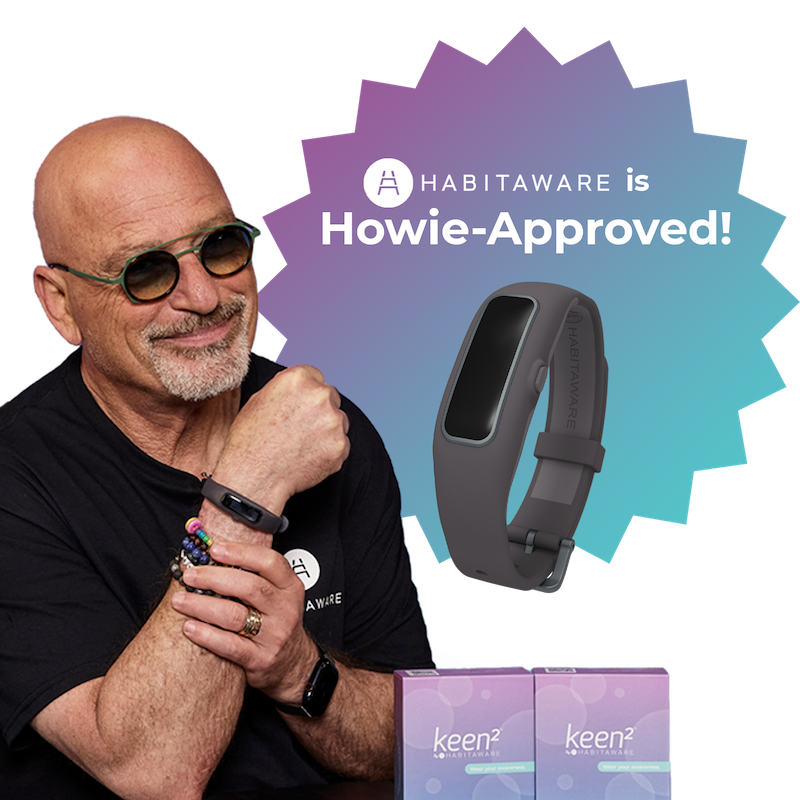

On Sunday, It was my turn to summon courage. That morning I walked into an empty session room and did a 2-minute Wonder Women power pose (more on that later), hooked up my laptop and smiled as folks gathered in.
Here’s how it went:
Once Upon A Time.
I began with my story about how I started pulling at age 11, how when I shared my hair pulling secret with a “best” friend in college, it backfired. Plus, how I found Keen, joined the Keen family and the Keen Team.
Then I shared what I've learned on my journey.
Step 1: BFRB is not YOUR fault. A heart attack is not our choice when it’s underway. A tumor can’t be willed to disappear, and we can’t just tell a diabetic to make their pancreas process sugar normally.
With a BFRB, some might say, buckle down and get just stop doing that to yourself. Step 1: A BFRB, without awareness and intervention, is not in our control. Just like a diabetics has tools -- insulin, exercise and diet -- to get control of their disease, we too, with a BFRB can use tools to get control of ours.
Let’s Talk About Shame
SHAME is the intensely painful feeling or experience of believing that we are flawed and therefore unworthy of love and belonging – something we've experienced, done, or failed to do makes us unworthy of connection.
There are 3 ingredients of shame.
1) Secrecy
2) Judgement
and
3) Silence
We all have shame - we just don’t like to talk about it.
But there is an antidote to shame. Like Brené Brown likes to say:
"If you put shame in a petri dish and feed it secrecy,
judgement and silence, it will grow.
But if you douse shame with empathy, it can’t survive."
“Man in the Arena” Teddy Roosevelt
"It’s not the critic who counts. It’s not the man who sits and points out how the doer of deeds could do things better as he falls and stumbles. The credit goes to the man in the arena who face is marred with dust & blood & sweat, and when he is in the arena, at best he wins, at worst he loses. But when he loses he does so daring greatly."
Brené Brown shared this powerful quote by Teddy Roosevelt. It reminds me of us, those with a BFRB. I used to be afraid of "walking into the arena" because of what other people will think. But I realize now that it doesn’t matter what other people think. My reality is that their are really only a small handful of people that I truly care what they think.
Now You Try It: Who's Opinion Matters?
- Rip out a piece of paper the size of a postage stamp from the corner of your nearest notebook.
- Write down the names of those people whom you truly care what they think about you.
- Place this tiny, but important paper, in your wallet.
- Whenever you are feeling those shame gremlins creep beside you, pull it out and look at it.
- What would those people say to you? If you can remember that they are the ones that matter, you will shatter shame.
Step 2: The Power of YET
Is there a specific subject or sport that you struggle with? Mine is math. In fifth grade I failed math. I’m not good at math. And because I’m not good at math I stay away from all things math.
A couple of years back a found Carol Dweck who studies human motivation. She talks about two different mindsets. A fixed mindset vs a growth mindset.
“In a fixed mindset, people believe their basic qualities, like their intelligence or talent, are simply fixed traits”, whereas in a growth mindset, “people believe that their most basic abilities can be developed through dedication and hard work—brains and talent are just the starting point.”
Then I learned the most powerful word.
YET.
I’m not good at Math, YET.
Now You Try It: What's Your "Yet"?
1. Complete this sentence: "I'm not good at ..." or "I can't..." with something that is hard for you, for example "I can't stop picking my skin." or "I can't stop pulling out my hair."
2. Then, add the word YET to the end of that sentence.
3. Say your newly created sentence out loud.
4. Recognize that this newly created sentence has created a sense of hope.
Step 3: Be prepared not surprised. Let’s not kid ourselves. We shouldn’t be surprised that our hands find our skin and hair in times of boredom, anxiety, and exhaustion, or in the car, at our desks, or watching TV.
Now You Try It: How Can You Prepare?
Creating your own BFRB survival kit is being prepared. Take pen and paper and jot down the places you tend to engage in your BFRB, your emotions and then some strategies to replace your behavior. I like to do that in my bullet journal.
Here’s what we came up with:

Bonus Step 4: Power Posing
Amy Cuddy in her TED Talk tells us that our body language can affect how we see ourselves. Her research shows that if you stand in a powerful pose (like I did with my wonder woman pose I mentioned at the top of this blog) that it can change your mind. There is a lot of talk on mind body connection, but this is more of a body mind connection.
Now You Try It: How Can You Power Up?
Before you walk into the room to take a test, or present, or an interview, take 2-minutes and stand in a powerful pose, with your hands either up in the air like your team just won, or on your hips like Wonder Woman.
You can also try this when you catch yourself in a picking or pulling episode. Stand up and power pose. If your with other people, go into the bathroom. You’ll be surprised how good you feel when the two minutes are over. Give it a try and let me know how it goes.
Putting it all together. Recovery is a journey. It takes time and hard work. 
We've got three steps to build a growth mindset and take control. Use these to get started on the path to healing.
- Step 1: Knowledge: Remember, having a BFRB is not your fault
- Step 2: Hope: I can’t stop my BFRB, YET
- Step 3: Action: Be prepared, test new strategies, learn along the way


